The immigration poster and our ‘unharmonized’ identity
By Steven RagaFrom Woodside to Chelsea, Jamaica to the Upper East Side, we find this advertisement seeping into all sections of New York City. It’s a transit poster of a young Filipina with the words “Born in the Philippines – Proud American. Now I am an important part of my community.” One can’t help but feel the tiniest inkling of pride at first, even as one wonders back and forth what the quote’s underlying message might convey.
Today, Labor Day, is the last day for this print ad campaign sponsored by the United States Citizenship & Immigration Services (USCIS). The posters started appearing in late June and are found mainly in New York, California, Florida and Texas, states with a high number of immigrant newcomers. It appears to be a comprehensive campaign by the USCIS, with similar posters in Spanish, in Vietnamese and in Chinese. However there seems to be a slight difference with the others: Their posters are not in English but in their native language, leaving ours the only one with English headers.
The use of English in the Philippines has been debated back and forth, but how does this affect young second- and third-generation Filipinos who were born and raised in the United States?
For the most part, these young adults have never asked to be alienated from the Filipino culture, but are nevertheless forced into it. Robbed of this birthright, they’re stripped of knowing their parent’s language first-hand, and most likely relegated to a limited understanding. Not all, but most Filipinos who are born and raised here in the U.S. have their attitudes on Filipino ‘identity’ thrown in the backseat and undercut by opinions of those born in the Philippines, because naturally: “How can you call yourself a Filipino and not speak the language?”
We’ve seen this trump card laid down time and time again. And since we have not yet, in unison, pushed an up-to-date and inclusive global Filipino identity, silenced is a large portion of young Filipino voices that did not grow up in the Philippines. This conversation of ‘identity’ is mostly found within the Filipino American young adult population, specifically at universities all across the country. Usually scoffed at by first- and 1.5-generation Filipinos in America — specifically the older voices — the mounting importance of ‘identity’ is brought to the fore as more and more young Filipinos in America no longer identify with their Filipino roots. Strolling through over-the-top malls with your cousins in Manila does not count. And if they cannot connect those simplest of dots, how can we expect them to connect their simplest of obligations to their own community – whether local or back home? We can’t.
In his recent essay “Language, Learning, Identity, Privilege,” James Soriano asserts that “English is the language of learning” and that Filipino “was the language of the streets: it was how you spoke to the tindera when you went to the tindahan, what you used to tell your katulong that you had an utos, and how you texted manong when you needed ‘sundo na.’” This language of everyday life outside the classroom walls is what most of those born and raised in the U.S. have been so cruelly deprived of. Not just simple definitions of words, but the underlying meaning and emotions of these words.
The USCIS poster may suggest that the Filipino language now, to a certain degree, factors less into the second- and third-generation Filipinos’ equation when trying to explore their heritage. What does this ad, in subway stations around various cities, say to young Filipinos in America, who have been initially given the impression that learning their native language is a legitimate way of connecting or reconnecting with the Philippines? What can we say to the regional Filipino student organizations and alliances in the U.S. that were originally founded in the 1990s during campaigns to attain Tagalog classes in local universities? What can we say, when the answers regrettably still elude us as a community?
Renato Constantino wrote that “one of the main impediments to our unity is language.” Equally, one of our main impediments to language is our unity – or the lack thereof. The USCIS ad of the young Filipina reflects the truth of an unharmonized people and bears the fruits of disconnection to our homeland for many young second- and third-generation Filipinos.
If unity seems too difficult a path to walk down, we can always stay the present course and be, as one doctor once said “higit pa sa hayop at malansang isda (worse than an animal and smelly fish)”.
 Steven Raga is an active member of the Filipino American community in New York City and has been previously involved with multiple Filipino young professionals, student, and youth organizations.
Steven Raga is an active member of the Filipino American community in New York City and has been previously involved with multiple Filipino young professionals, student, and youth organizations.

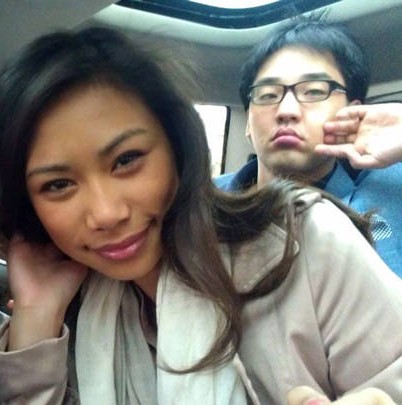
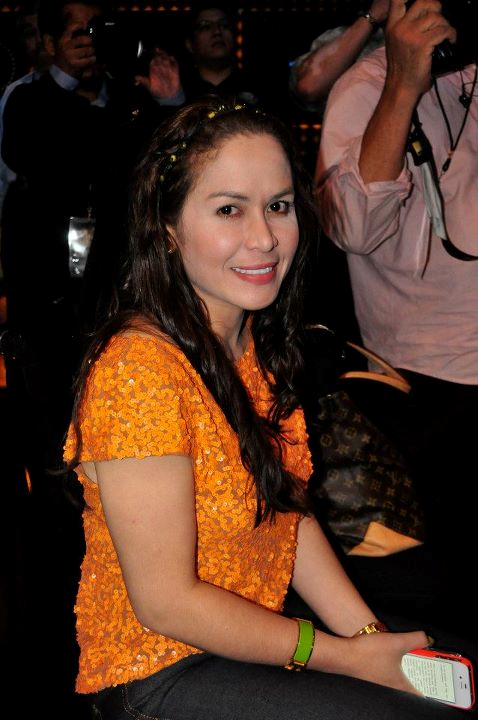

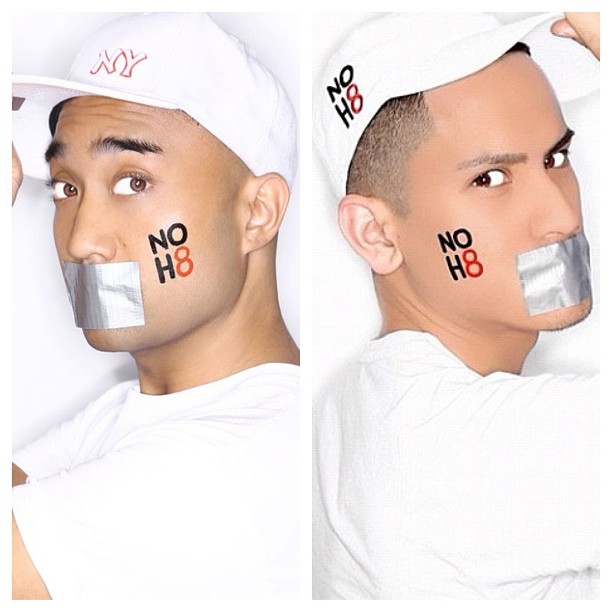

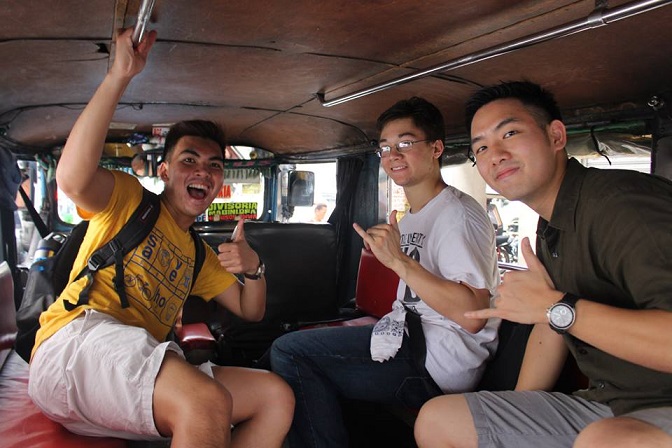
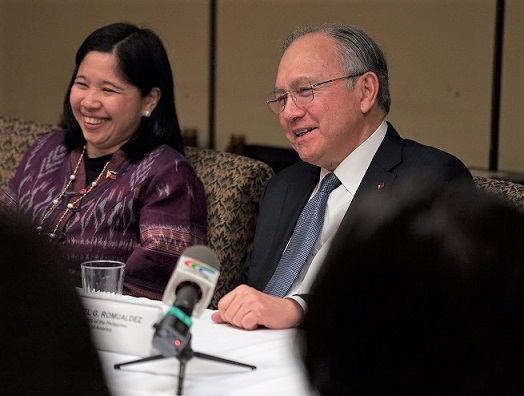
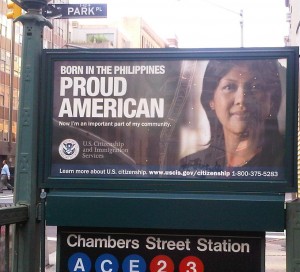

Good article Mr. Raga, Esq!
That female model in the poster is upon realistic terms of perceived acuity, not a correct visual representative of a genetic woman from the Philippines. For the woman in the poster advertisement is actually phenotypically Chinese in appearance due to a large percentage of her inherited heredity derived from Chinese ancestors from the mainland of China. I believe that the USCIS should use only ethnic Philippine girls in the future and present, to portray people from the Philippines as photographic models in order to more realistically portray people from the Philippines.
Another question is, when is the USCIS going to use a male Philippine person as a photographed model for this advertisement reading “Born in the Philippines – Proud American”? Aren’t Filipino males proud as well? Your males should also be represented in the film and video media industry of the United States.
Back to the main point of your article, I see that perhaps some thought should be granted toward accepting and practicing American values with the values of your originating country.
Filipinos are a diverse group of people. The woman in the photo is actually representative of a typical Filipina with Malay, Chinese and perhaps Caucasian features. We are a hybrid race. I don’t know what you are referring to as “ethnic Philippine girls in the future and present.” The lady realistically portrays a typical Filipina.
I love your site! 🙂
Very great read! It’s interesting how this wasn’t used or brought up no, during election time!
Living here in the Philippines use to be fair enough, now making a living here in the Philippines is getting hard and harder, the language is complicated, Tagalog, English, Elunggo and etc. Middle and rich folks who speak Tagalog has a brain like the martian attack, too proud that they lost reality, my relatives use to work for those rich People in Luzon, and now they are applying work in the US. At first I too oppose working overseas, working here as a rice farmer was nice but everything is going up, prices go up, local rice prices go down I had to find other source of income, now that I had taste working as an employee for multiple small business, life in the Philippines is for the filthy middle class and rich, even Tagalog who are at the working class are applying in the US for work. I just found about this because of John Oliver show, Born in the Philippines proud American, I Like the message… Being a Filipino you have to be in the middle class and top of the rich no wonder Chinese are moving in the Philippines.